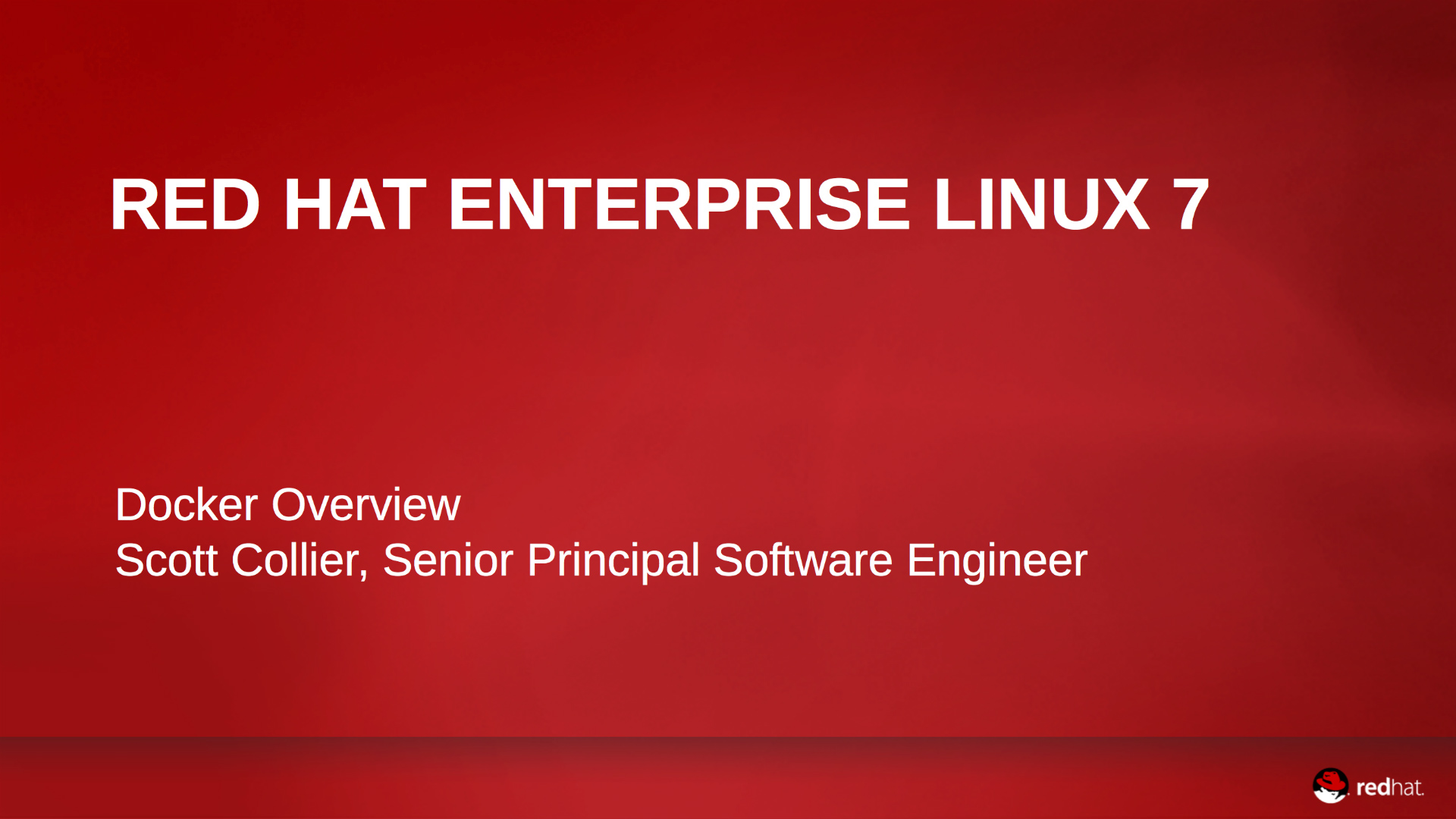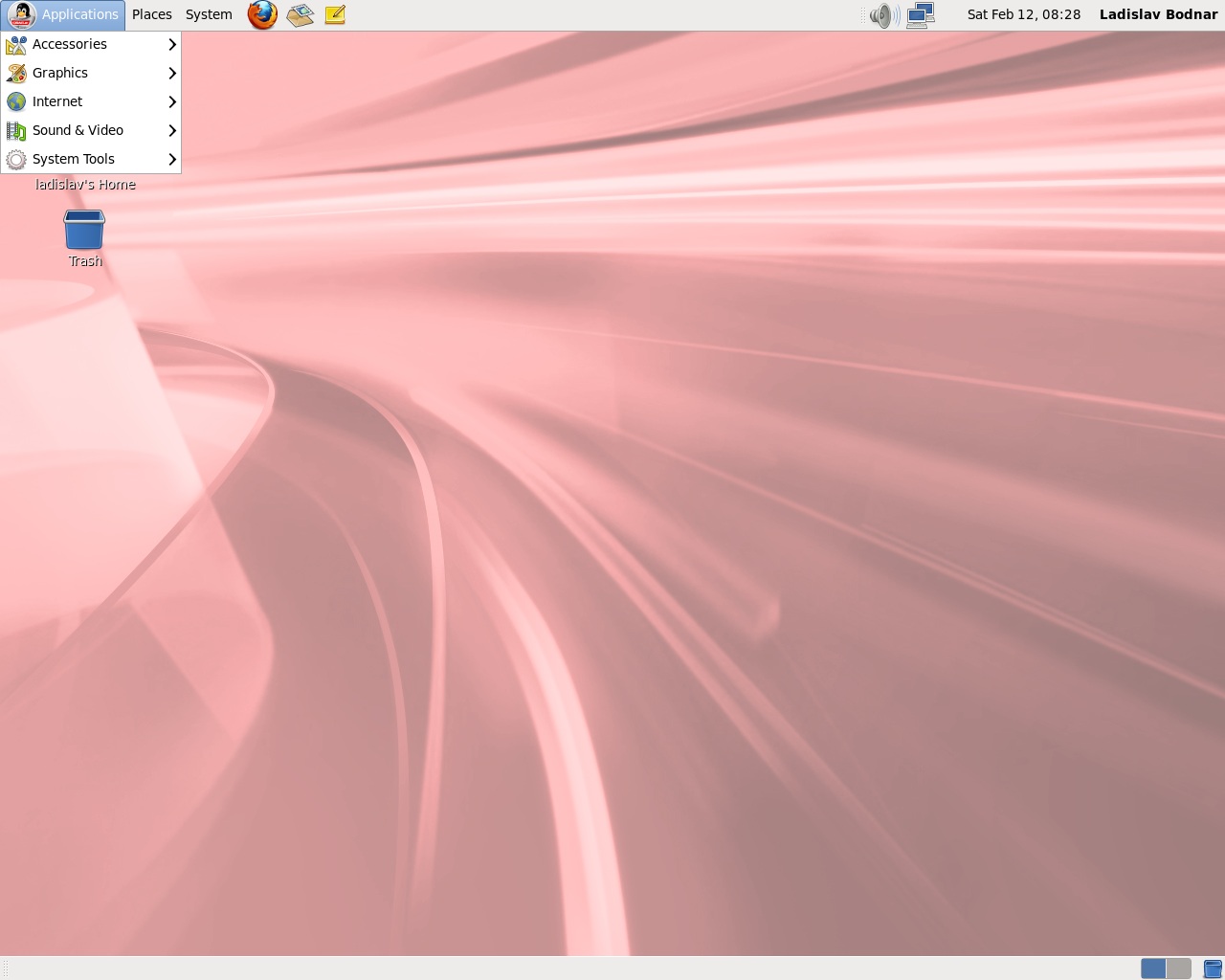Download libicu-4.2.1-14.el6.x8664.rpm for CentOS 6 from CentOS repository. Download Red Hat Enterprise Linux 6 Iso 64 Bit Free Configuring your Interface Red Hat Enterprise Linux 7 Download. From this menu you can specify your network settings. In the example, I have set the interface to connect automatically and allow all users to use the interface. In the example, I am configuring a static IP address using IPv4.
Contents
- Install R
- Install Rserve Package
- Install ROracle Package
Install R
In order to get R running on RHEL 6, we need to add an additional repository that allows us to install the new packages.The EPEL (Extra Packages for Enterprise Linux) is a Fedora Special Interest Groupthat creates, maintains, and manages a high quality set of additional packages for Enterprise Linux,including, but not limited to, Red Hat Enterprise Linux (RHEL), CentOS and Scientific Linux (SL), Oracle Linux (OL).
EPEL Repository
First, login as root user, and add EPEL repository:

You can also search for additional R packages using yum command:
When the installation is finished successfully, you can run R:
To verify is EPEL repository is enabled, run following command:
And the output could be like:
[Optional] CentOS Repository
Sometimes, there could be some library missing while installing R using yum.In this case, you may need add CentOS repository by creating a new repository file:
And add following contents (note that you need to change the version number depending on your RHEL version):
Install Rserve Package
Download and Install
Rhel 6 X64 7
Find the Rserve package file in our R archive, or download the latest version fromCRAN.
Then use R CMD to install the package (the file name could be different):
Configuration
Rserve is configured by the configuration file /etc/Rserv.conf.If no configuration file is supplied, Rserve accepts no remote connections,requires no authentication and file transfer is enabled.To enable remote access, we need to create a configuration file and enable remote:
The other possible configuration items are as follows(all entries are optional, default values are in angled brackets):
Start Rserve
Login as rudolph user and start the Rserve by:
Then check if the Rserve can be remotely accessed from other machine:
If you have an accessible Rserve, you should see a response like:
Install ROracle Package
Find the R package files (DBI and ROracle) in our R archive, or download the latest version fromDBIand ROracle.
Install DBI
Install ROracle
If you have Oracle Client installed, you need to set LD_LIBRARY_PATH and ORACLE_HOME variables.For example, if the Oracle was installed in /apps/oracle/product/11g, then you need to do following:
If you have Oracle Instant Client installed, you need to set OCI_LIB and LD_LIBRARY_PATH variables.For example, if the Instant Client was installed in ‘/apps/oracle/instantclient_11_2’, then you need to do following:
To verify if ROracle is installed, you can launch R console by running R and load the library:
For more details about installing ROracle, please refer to https://cran.r-project.org/web/packages/ROracle/INSTALL.
Uninstall R
Suppose you install R using yum, then you can use the following commands to totally uninstall R:
Reference & Resource
-->.NET is supported on RHEL. This article describes how to install .NET on RHEL.
Install the SDK (which includes the runtime) if you want to develop .NET apps. Or, if you only need to run apps, install the Runtime. If you're installing the Runtime, we suggest you install the ASP.NET Core Runtime as it includes both .NET and ASP.NET Core runtimes.
If you've already installed the SDK or Runtime, use the dotnet --list-sdks and dotnet --list-runtimes commands to see which versions are installed. For more information, see How to check that .NET is already installed.
Register your Red Hat subscription
To install .NET from Red Hat on RHEL, you first need to register using the Red Hat Subscription Manager. If this hasn't been done on your system, or if you're unsure, see the Red Hat Product Documentation for .NET.
Supported distributions
The following table is a list of currently supported .NET releases on both RHEL 7 and RHEL 8. These versions remain supported until either the version of .NET reaches end-of-support or the version of RHEL is no longer supported.
- A ✔️ indicates that the version of RHEL or .NET is still supported.
- A ❌ indicates that the version of RHEL or .NET isn't supported on that RHEL release.
- When both a version of RHEL and a version of .NET have ✔️, that OS and .NET combination is supported.
| RHEL | .NET Core 2.1 | .NET Core 3.1 | .NET 5.0 |
|---|---|---|---|
| ✔️ 8 | ✔️ 2.1 | ✔️ 3.1 | ✔️ 5.0 |
| ✔️ 7 | ✔️ 2.1 | ✔️ 3.1 | ✔️ 5.0 |
The following versions of .NET are no longer supported. The downloads for these still remain published:
- 3.0
- 2.2
- 2.0
Remove preview versions
When using a package manager to manage your installation of .NET, you may run into a conflict if you've previously installed a preview release. The package manager may interpret the non-preview release as an earlier version of .NET. To install the non-preview release, first uninstall the preview versions. For more information about uninstalling .NET, see How to remove the .NET Runtime and SDK.
How to install other versions
Consult the Red Hat documentation for .NET on the steps required to install other releases of .NET.
RHEL 8 ✔️
.NET is included in the AppStream repositories for RHEL 8.
Install the SDK
The .NET SDK allows you to develop apps with .NET. If you install the .NET SDK, you don't need to install the corresponding runtime. To install the .NET SDK, run the following commands:
Install the runtime
The ASP.NET Core Runtime allows you to run apps that were made with .NET that didn't provide the runtime. The following commands install the ASP.NET Core Runtime, which is the most compatible runtime for .NET. In your terminal, run the following commands:
As an alternative to the ASP.NET Core Runtime, you can install the .NET Runtime, which doesn't include ASP.NET Core support: replace aspnetcore-runtime-5.0 in the previous command with dotnet-runtime-5.0:

RHEL 7 ✔️ .NET 5.0
The following command installs the scl-utils package:
Install the SDK
The .NET SDK allows you to develop apps with .NET . If you install the .NET SDK, you don't need to install the corresponding runtime. To install .NET SDK, run the following commands:
Red Hat does not recommend permanently enabling rh-dotnet50 because it may affect other programs. If you want to enable rh-dotnet permanently, add the following line to your ~/.bashrc file.
Install the runtime
The .NET Runtime allows you to run apps that were made with .NET that didn't include the runtime. The commands below install the ASP.NET Core Runtime, which is the most compatible runtime for .NET Core. In your terminal, run the following commands.
Red Hat does not recommend permanently enabling rh-dotnet50 because it may affect other programs. If you want to enable rh-dotnet50 permanently, add the following line to your ~/.bashrc file.
As an alternative to the ASP.NET Core Runtime, you can install the .NET Runtime that doesn't include ASP.NET Core support: replace rh-dotnet50-aspnetcore-runtime-5.0 in the commands above with rh-dotnet50-dotnet-runtime-5.0.
RHEL 7 ✔️ .NET Core 3.1
Before you install .NET, run the following commands to add the Microsoft package signing key to your list of trusted keys and add the Microsoft package repository. Open a terminal and run the following commands:
The following command installs the scl-utils package:
Install the SDK
.NET Core SDK allows you to develop apps with .NET Core. If you install .NET Core SDK, you don't need to install the corresponding runtime. To install .NET Core SDK, run the following commands:
Red Hat does not recommend permanently enabling rh-dotnet31 because it may affect other programs. For example, rh-dotnet31 includes a version of libcurl that differs from the base RHEL version. This may lead to issues in programs that do not expect a different version of libcurl. If you want to enable rh-dotnet permanently, add the following line to your ~/.bashrc file.
Install the runtime
The .NET Core Runtime allows you to run apps that were made with .NET Core that didn't include the runtime. The commands below install the ASP.NET Core Runtime, which is the most compatible runtime for .NET Core. In your terminal, run the following commands.
Red Hat does not recommend permanently enabling rh-dotnet31 because it may affect other programs. For example, rh-dotnet31 includes a version of libcurl that differs from the base RHEL version. This may lead to issues in programs that do not expect a different version of libcurl. If you want to enable rh-dotnet31 permanently, add the following line to your ~/.bashrc file.
As an alternative to the ASP.NET Core Runtime, you can install the .NET Core Runtime that doesn't include ASP.NET Core support: replace rh-dotnet31-aspnetcore-runtime-3.1 in the commands above with rh-dotnet31-dotnet-runtime-3.1.
Snap
A snap is a bundle of an app and its dependencies that works without modification across many different Linux distributions. Snaps are discoverable and installable from the Snap Store. For more information about Snap, see Getting started with Snap.
Only supported versions of .NET Core are available through Snap.
Rhel 6 Xrdp Package
Install the SDK
Snap packages for .NET SDK are all published under the same identifier: dotnet-sdk. A specific version of the SDK can be installed by specifying the channel. The SDK includes the corresponding runtime. The following table lists the channels:
| .NET version | Snap package |
|---|---|
| 5.0 | 5.0 or latest/stable |
| 3.1 (LTS) | 3.1 or lts/stable |
| 2.1 (LTS) | 2.1 |
Rhel 6 Xfs
Use the snap install command to install a .NET SDK snap package. Use the --channel parameter to indicate which version to install. If this parameter is omitted, latest/stable is used. In this example, 5.0 is specified:
Next, register the dotnet command for the system with the snap alias command:
This command is formatted as: sudo snap alias {package}.{command} {alias}. You can choose any {alias} name you would like. For example, you could name the command after the specific version installed by snap: sudo snap alias dotnet-sdk.dotnet dotnet50. When you use the command dotnet50, you'll invoke this specific version of .NET. But this is incompatible with most tutorials and examples as they expect a dotnet command to be available.
Install the runtime
Snap packages for .NET Core Runtime are each published under their own package identifier. The following table lists the package identifiers:
| .NET version | Snap package |
|---|---|
| 5.0 | dotnet-runtime-50 |
| 3.1 (LTS) | dotnet-runtime-31 |
| 3.0 | dotnet-runtime-30 |
| 2.2 | dotnet-runtime-22 |
| 2.1 (LTS) | dotnet-runtime-21 |
Use the snap install command to install a .NET Runtime snap package. In this example, .NET 5.0 is installed:
Next, register the dotnet command for the system with the snap alias command:
This command is formatted as: sudo snap alias {package}.{command} {alias}. You can choose any {alias} name you would like. For example, you could name the command after the specific version installed by snap: sudo snap alias dotnet-runtime-50.dotnet dotnet50. When you use the command dotnet50, you'll invoke this specific version of .NET. But this is incompatible with most tutorials and examples as they expect a dotnet command to be available.
SSL Certificate errors
Icu4c-57_1-rhel 6-x64.tgz
When .NET is installed through Snap, it's possible that on some distros the .NET SSL certificates may not be found and you may receive an error similar to the following during restore:

To resolve this issue, set a few environment variables:
The certificate location will vary by distro. Here are the locations for the distros where we have experienced the issue.
- Fedora -
/etc/pki/ca-trust/extracted/pem/tls-ca-bundle.pem - OpenSUSE -
/etc/ssl/ca-bundle.pem - Solus -
/etc/ssl/certs/ca-certificates.crt
Dependencies
Rhel.6-x64 Agent Package
When you install with a package manager, these libraries are installed for you. But, if you manually install .NET Core or you publish a self-contained app, you'll need to make sure these libraries are installed:
Icu4c-57_1-rhel 6-x64.tgz Download
- krb5-libs
- libicu
- openssl-libs
If the target runtime environment's OpenSSL version is 1.1 or newer, you'll need to install compat-openssl10.
For more information about the dependencies, see Self-contained Linux apps.
For .NET Core apps that use the System.Drawing.Common assembly, you'll also need the following dependency:
Warning
You can install a recent version of libgdiplus by adding the Mono repository to your system. For more information, see https://www.mono-project.com/download/stable/.
Scripted install
The dotnet-install scripts are used for automation and non-admin installs of the SDK and Runtime. You can download the script from https://dot.net/v1/dotnet-install.sh.
The script defaults to installing the latest SDK long term support (LTS) version, which is .NET Core 3.1. To install the current release, which may not be an (LTS) version, use the -c Current parameter.
Rhel 6 X64 Download
To install .NET Runtime instead of the SDK, use the --runtime parameter.
You can install a specific version by altering the -c parameter to indicate the specific version. The following command installs .NET SDK 5.0.
For more information, see dotnet-install scripts reference.
Manual install
As an alternative to the package managers, you can download and manually install the SDK and runtime. Manual install is usually performed as part of continuous integration testing or on an unsupported Linux distribution. For a developer or user, it's generally better to use a package manager.
If you install .NET SDK, you don't need to install the corresponding runtime. First, download a binary release for either the SDK or the runtime from one of the following sites:
- ✔️ .NET 5.0 downloads
- ✔️ .NET Core 3.1 downloads
- ✔️ .NET Core 2.1 downloads
Next, extract the downloaded file and use the export command to set variables used by .NET and then ensure .NET is in PATH.
To extract the runtime and make the .NET CLI commands available at the terminal, first download a .NET binary release. Then, open a terminal and run the following commands from the directory where the file was saved. The archive file name may be different depending on what you downloaded.
Use the following command to extract the runtime:
Use the following command to extract the SDK:
Tip
The preceding export commands only make the .NET CLI commands available for the terminal session in which it was run.
You can edit your shell profile to permanently add the commands. There are a number of different shells available for Linux and each has a different profile. For example:
- Bash Shell: ~/.bash_profile, ~/.bashrc
- Korn Shell: ~/.kshrc or .profile
- Z Shell: ~/.zshrc or .zprofile
Edit the appropriate source file for your shell and add :$HOME/dotnet to the end of the existing PATH statement. If no PATH statement is included, add a new line with export PATH=$PATH:$HOME/dotnet.
Also, add export DOTNET_ROOT=$HOME/dotnet to the end of the file.
This approach lets you install different versions into separate locations and choose explicitly which one to use by which application.
Next steps

Comments are closed.